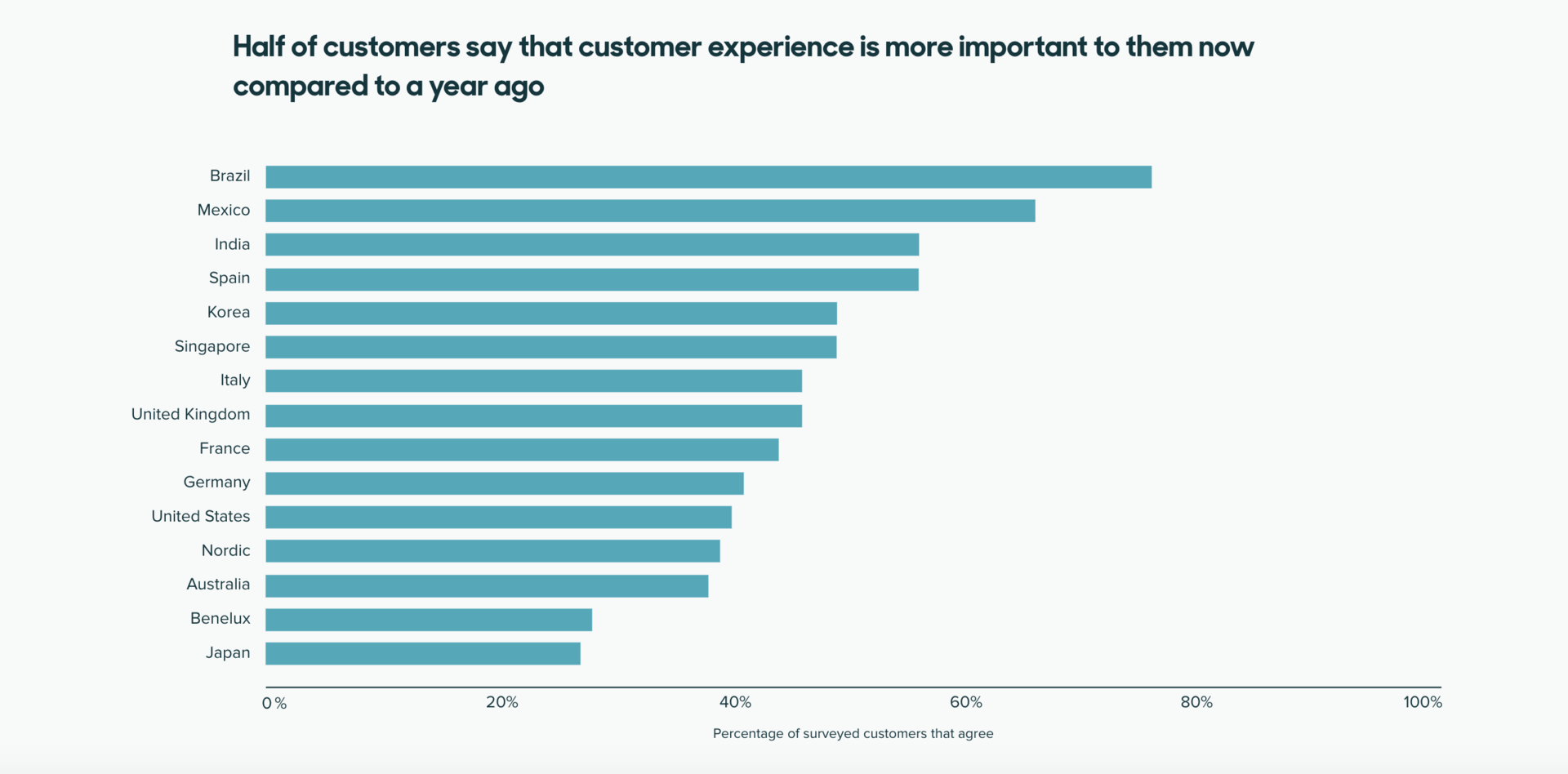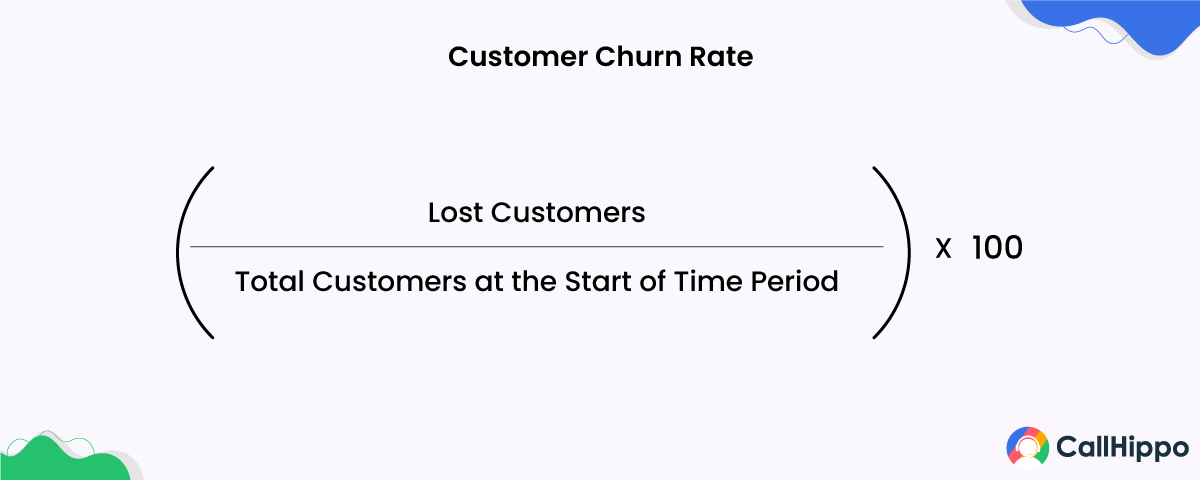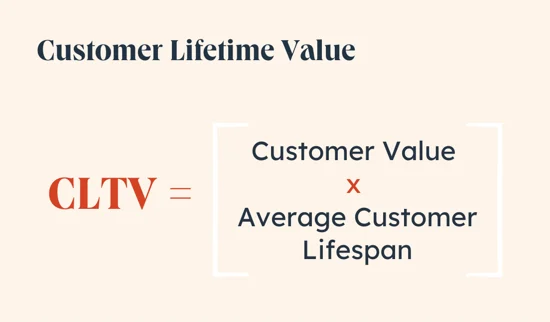With countless options available to consumers in almost every industry, retaining loyal customers is equally crucial as getting new ones.
So, having a healthy consumer retention rate becomes handy for the organization as it offers numerous benefits to them.
But how to retain customers is a big question. Let us understand a few ways to calculate the customer retention rate, along with the formula to calculate it.
What is Customer Retention?
Customer retention means the number of retained customers by a company over a specified period.
It emphasizes developing strong, long-term relationships with customers to generate repeat purchases and loyalty.
For instance, if your company begins the year with 100 customers and loses 20 of them, you have an 80 percent retention rate.
A high customer retention rate implies that consumers are satisfied with the product or service, resulting in repeat purchases and favorable customer recommendations.
Your customers are the backbone of your business. Actively listen to their feedback, and don't forget to show genuine appreciation for their loyalty with exclusive offers and rewards.
By making their satisfaction a priority, you can ensure long-term retention and success.
How Can You Calculate Customer Retention Rate?
Customer retention calculation is mandatory for understanding how well a business is retaining its customers. Here’s the customer retention rate formula:
- Calculate how many clients you will have by the end of a certain period (month or year).
- Reduce the number of customers you’ve acquired over that period.
- Divide by the number of consumers you had at the start of the quarter.
- Then multiply it by 100.
Let’s understand with a real-life example;
If you had 100 customers at the start of Q1 and ended with 120 after adding 30 new ones during the quarter, your CRR would be 90%.
This indicates that the company lost 10 consumers over that period.
5 Ways to Improve Customer Retention
Here are 5 effective ways by which you can improve your customer retention:
1. Provide Exceptional Customer Experience
An excellent customer experience is crucial for retaining customers. Make sure that all client contacts, whether online, by phone, or in person, are positive and helpful.
In addition, 50% feel that customer experience is more important to their companies now than it was last year.

Customers are more likely to become loyal if the customer success team is dealings with them more convenient, personable, and rewarding for them.
2. Offer Personalized Experiences
Personalization can have a big impact on client retention. Use customer data and insights to tailor products, services, and marketing campaigns to individual consumer tastes and needs.
Personalized advice, unique discounts, and targeted communication can all help clients feel valued and appreciated.
3. Offer Omnichannel Support
Do not limit your support options to one or two specific methods. Use omnichannel assistance to allow customers to select the channel that best meets their requirements.
This includes traditional channels like phone and email, as well as newer ones like live chat, social media, and messaging apps.
Omnichannel marketing interactions are likely to improve client retention. It’s beneficial because you are minimizing the amount of work required to complete a transaction or contact customer service.
4. Solicit and Act on Feedback
Actively seek feedback from customers and use it to improve your products, service, and overall customer expectations.
Whether through surveys, reviews, or direct communication, listen to what your customers have to say and make the necessary changes.
Showing customers that their opinions have value and matter for the organization can enhance loyalty and retention.
5. Stay in Touch
Sustain connections with your clientele even after they’ve completed a transaction. Generally, it is termed an after-sale service feature.
Use email marketing, social media, or different communication channels to keep customers engaged and informed about new products, promotions, or corporate news.
Regular communication promotes top-of-mind awareness and strengthens the relationship between the company and its customers.
Retention Rate vs. Churn Rate
Retention Rate and Churn Rate are two key metrics for any business focused on maintaining a strong customer base. Both metrics provide valuable insights into customer loyalty and satisfaction, which directly impact long-term business success.
To better understand the relationship between retention rate and churn rate, below is the comparison of the two metrics:
1. Customer Retention Rate
The customer retention rate calculates the number of customers using a company’s products or services over a certain period. A higher customer retention rate demonstrates loyal customers as well as repeat businesses. To enhance retention rates, focus on excellent, satisfactory service and provide one-to-one experience.
- (Customers Lost / Customers at Start of Period) × 100
2. Churn Rate
Churn rate indicates the percentage of customers who abandon your organization over a specified time period. High churn indicates an element of dissatisfaction or an unmet overall needs of the customer. To reduce churn, focus on resolving customer issues and launching improved incentives and loyalty programs.
- (Customers at End of Period - New Customers) / Customers at Start of Period) × 100
- Using actionable insights effectively can boost your retention rate while lowering your churn rate. It helps you to build stronger customer loyalty and improve overall business performance.
Customer Retention KPIs to Calculate
Customer retention is an important Key Performance Indicator (KPI) for every firm. However, several other customer retention KPIs can provide valuable insights into retention efforts:
1. Repeat Purchase Rate
The repeat purchase rate is the percentage of customers who do business with the company again after their initial purchase.
For example, if you had 500 customers in a month and 150 of them made repeat purchases, your repeat purchase rate would be (150 / 500) * 100 = 30
A high repeat purchase rate indicates customer loyalty and satisfaction, contributing significantly to a company’s revenue stream over time.
Some companies take a step forward and compute the loyal customer rate, which indicates consumers who have made a purchase more than once.
- Using actionable insights effectively can boost your retention rate while lowering your churn rate. It helps you to build stronger customer loyalty and improve overall business performance.
2. Churn Rate
The churn rate is the percentage of customers who discontinue using a product or service within a specified time frame.
Monitoring the churn rate allows you to detect potential issues and areas for improvement in the customer experience.

For example, if a company starts with 1000 customers and loses 50 customers in a month, the churn rate would be (50 / 1000) * 100 = 5%.
High churn rates may indicate issues with product quality, customer service, or overall satisfaction.
3. Customer Lifetime Value (CLV)
Customer lifetime value (CLV or CLTV) is a statistic that estimates how much money a company can reasonably expect to generate from a single customer account throughout the business relationship.

For example, If the average purchase value is $50, the average purchase frequency rate is twice per month, and the average customer lifespan is 24 months, then the CLV would be $50 * 2 * 24 = $2400.
CLV can be used to segment customers based on their value to the business, allowing companies to prioritize resources and efforts.
By understanding the lifetime value of a customer, businesses can focus on retaining high-value customers and increasing their overall profitability.
Final Thoughts
Customer retention is an essential component of every successful business plan. Businesses that prioritize building great relationships, providing exceptional experiences, and implementing effective retention strategies can increase customer loyalty, create repeat purchases, and ultimately boost their bottom line.
Monitoring customer retention metrics, repeat purchase rate, churn rate, and CLV can help organizations track their progress and make more educated decisions to improve customer retention.
FAQs
1. What is the rate of retention?
The rate of retention, also known as the customer retention rate, is the percentage of consumers that a company retains over a given time period.
2. What does an 80% retention rate mean?
An 80% retention rate indicates that a business can keep 80% of its clients over a specified time period. This indicates high levels of consumer satisfaction and loyalty.
3. What is the customer retention rate used for?
Customer retention rates are used to assess the success of a company’s attempts to keep existing clients. It enables firms to identify areas for improvement and adopt methods to promote client loyalty.
4. How to maintain a customer?
Sustaining a customer involves providing great customer service, offering personalized experiences, developing loyalty programs, asking and responding to feedback, and maintaining regular connections with customers.

Subscribe to our newsletter & never miss our latest news and promotions.
![How to Calculate & Improve Customer Retention Rate? [With Formula] How to Calculate & Improve Customer Retention Rate? [With Formula]](https://callhippo.com/blog/wp-content/uploads/2024/05/Customer-Retention-Rate-Ways-to-Improve.jpg)








